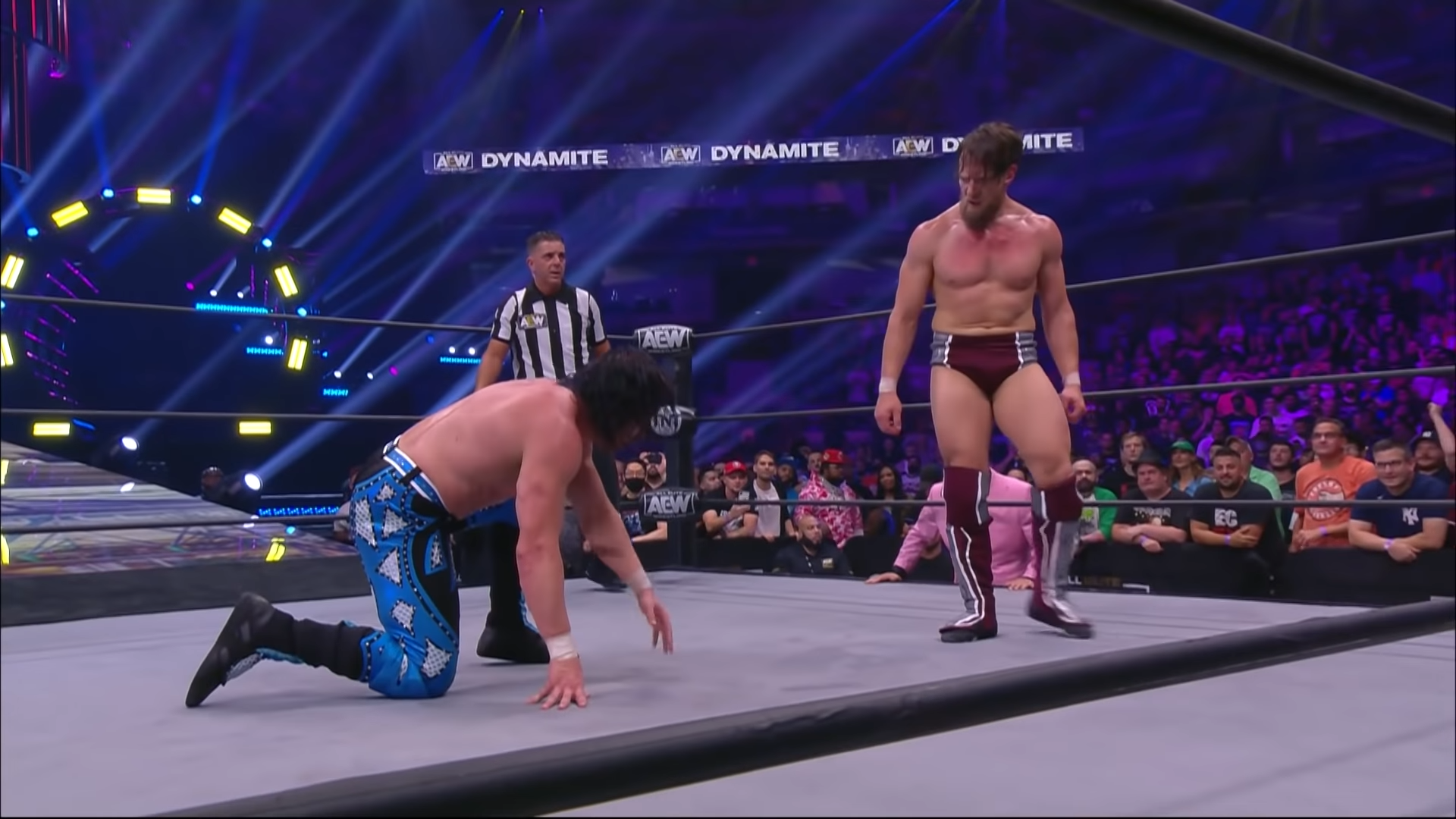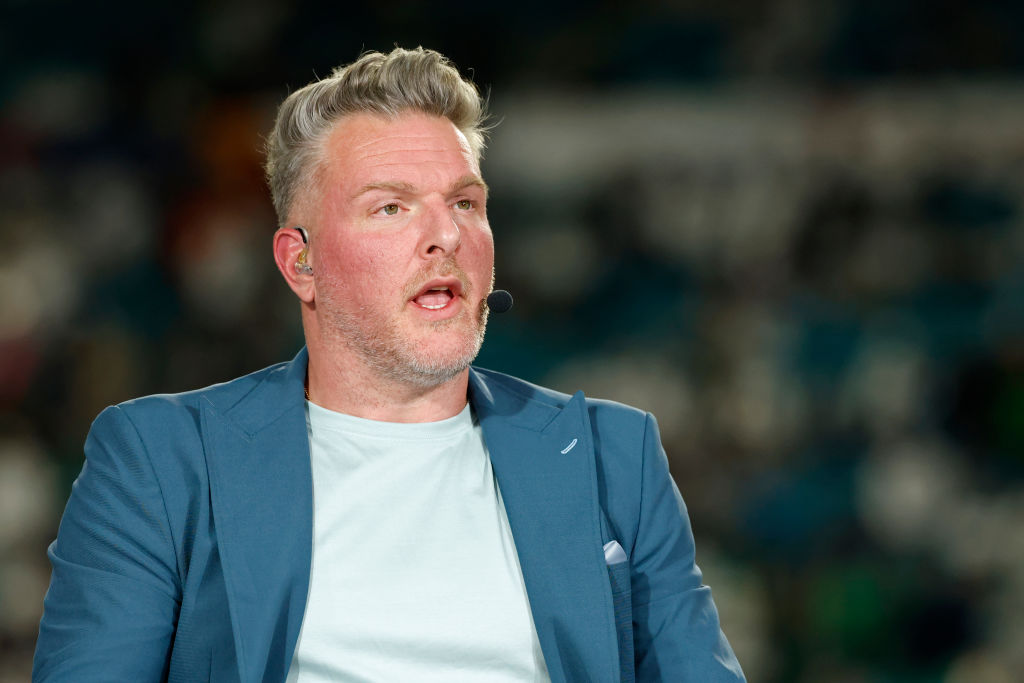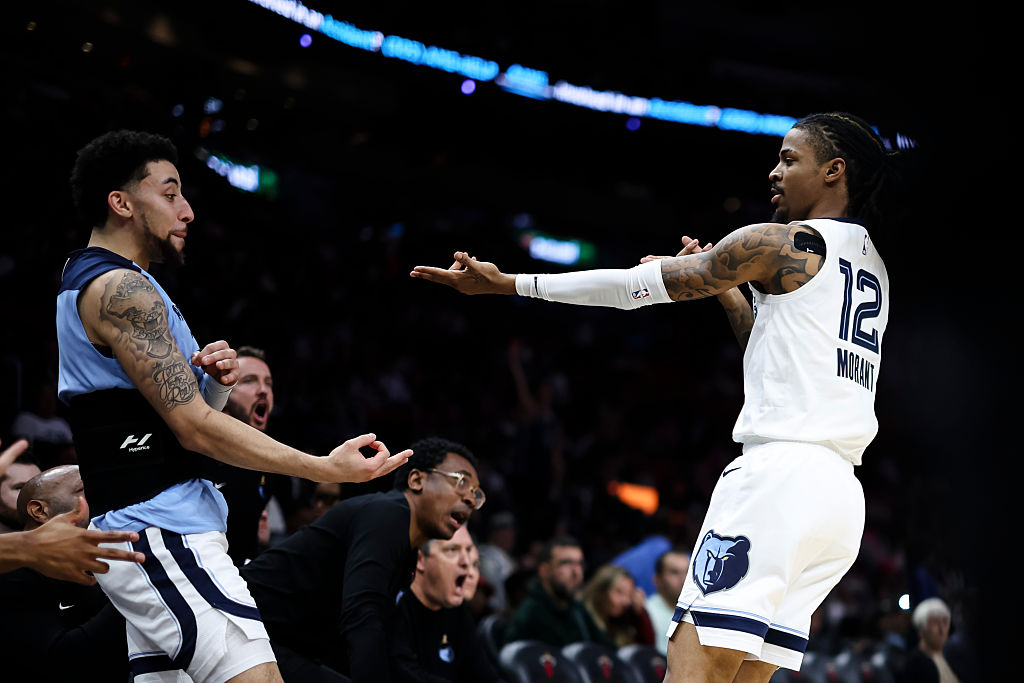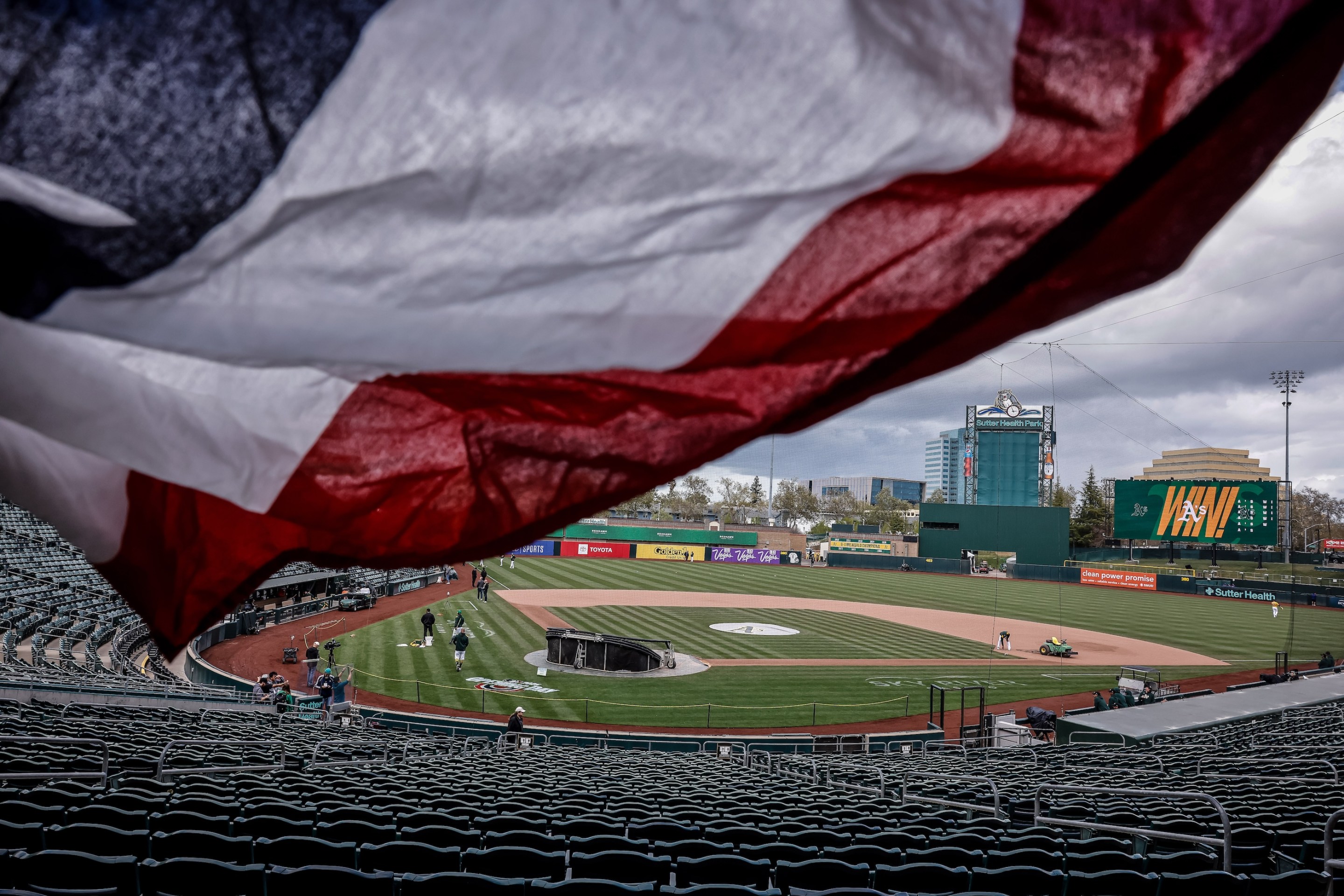FLUSHING, N.Y. — There's something pretty gutsy about a wrestling promotion opening a two-hour TV show (and a four-hour live event) with the most anticipated match in its history, instead of building to it as the main event. But in the case of Bryan Danielson vs. Kenny Omega at Arthur Ashe Stadium in Queens on Wednesday, the gambit paid off, as an announced crowd of over 20,000 was hot out of the gate and harnessed its energy to carry this dream match to a 30-minute draw.
All Elite Wrestling, which aired its flagship show Dynamite from the home of the U.S. Open live on Wednesday while also taping its Friday show Rampage immediately after, has been on a frickin' roll lately, and their Labor Day weekend PPV All Out was easily the most lucrative in this company's two-year history. Not only did it have possibly the greatest cage match ever, and also the massive return of CM Punk as an honest-to-goodness wrestler for the first time in seven years, but it closed by debuting both an enormously popular but underutilized WWE star in Adam Cole and, most importantly, a guy who main-evented WrestleMania this year in Danielson. The Arthur Ashe show a few weeks later was already set to host the company's biggest crowd yet, before any specific matches were even promoted. But the trampoline-like boost that AEW got from All Out set the stage for this to be something special.
(Minor spoilers for Rampage in the following paragraph.)
The Grand Slam card—that's what they called this show—is eye-popping even now but would have been inconceivable a few years ago. In Sting, Christian Cage, and CM Punk, there were at least three stars whose in-ring careers were very recently thought to be over. In Minoru Suzuki, there was a legend of New Japan Pro Wrestling. In Danielson, there was a recent centerpiece of WWE. (Not to mention Cole, Jon Moxley, and Chris Jericho, all former main-eventers over there.) In everyone from Omega to the Young Bucks to the Lucha Brothers to Darby Allin, there were the AEW originals who'd been on these shows since the beginning. Outside the world of pro wrestling, Jorge Masvidal was among the MMA fighters who got involved in the action. And all of this happened before Eddie Kingston, who pre-COVID was a journeyman indie guy who'd never gotten a break, soaked in the biggest cheers of the night as he closed the show following a surprise guest appearance from mentor and local hero Homicide.
**CONTAINS SLIGHT SPOILERS FOR #AEWRampage**
— Jacky Rodriguez (@loveyoumake24) September 23, 2021
Eddie Kingston post-match calling out his Mom (who was seated a section over behind me) and capturing this moment was so damn beautiful. Yes I teared up. A Mom’s love is everything. 🥺😭 pic.twitter.com/Jog5QTajEe
If all that sounds a bit exhausting ... well ... yes, the excess and the chaos that tends to mark these sorts of events at these sorts of venues was out in full, and there's a litany of logistical complaints that I could rattle off. It took about 45 minutes just to get in, as an orderly line that snaked up and down the Flushing Meadows Pedestrian Bridge inexplicably dissolved into a free-for-all. The concessions, though I didn't try my luck with them, were apparently an understaffed gantlet that cost a hungry fan multiple matches to run. And the 7 train, as it underwent planned late-night work, was not the most reliable ally for the return trip home. (I got back to my Bed-Stuy apartment at 2:30 a.m.)
All of this is not to undermine the show, but to illuminate just how much it asked of the AEW crowd, who not only had to navigate these pitfalls but also make a ton of noise for over four hours of pro graps. In the second half, the fans were clearly spending their energy strategically. Instead of constant waves of cheers and boos, stretches of silence in the lesser matches alternated with giant explosions of sound for the most popular performers.
Which is why, on this Thursday when everybody I know who went is extraordinarily tired, it makes perfect sense that AEW opened the show with its royal flush—the Omega and Danielson showdown. Though these two did have a goofy little match out in California in 2009, before Danielson was known to casual fans and before Omega was even known to hardcores, this was for all intents and purposes a first-time-ever affair between two of the best ever: An indie king turned WWE icon vs. a man who's revolutionized wrestling in multiple hemispheres. Honestly, everything you need to know about the significance of this match—and how amazing it is that it was on TV in 2021—can be summed up just by how much the crowd ate up the first minute, where literally nothing happened.
The match itself, from bell to bell, was devoid of any kind of frills or carny bullshit to an almost shocking degree. Omega as champion has built up his standing with the crowd as a villain by relying heavily on cheating, interference, and cheap finishes. But there was absolutely none of that on Wednesday. The two wrestling sages started slowly and steadily built from there.
The match had perfectly placed spots that triggered gasps from the audience, like Omega's running knee from the entrance ramp. It had a steadily building chorus of "Yes!" chants as the former Daniel Bryan connected with more and more kicks. It saw both wrestlers, failing to gain the upper hand, break out moves that they rarely ever attempt, like the cattle mutilation and the phoenix splash. And as the clock ran down, it avoided a clichéd ending—like, say, one where Danielson has Omega pinned for a two count when the time reaches zero—and instead told a story about how these two were so good and so well-matched that resolution simply can't be found within a half hour or a single contest. They left me with the impression that they hadn't bumped their heads on the ceiling of what they can do. A sequel, I believe, will be even better.
Though it'd have been cynically rational for fans to have expected some sort of swerve that would delay the "real" bout to PPV instead of on TNT, this match did exactly what it said it was going to do. Kenny Omega and Bryan Danielson had a pro wrestling match until the 30-minute time limit was reached (with, for the fans at home, only one picture-in-picture commercial break). There were run-ins and a beat-down and set-ups for more stories, but not until the bell had rung and both had delivered as advertised. A draw has never felt more like a victory.






